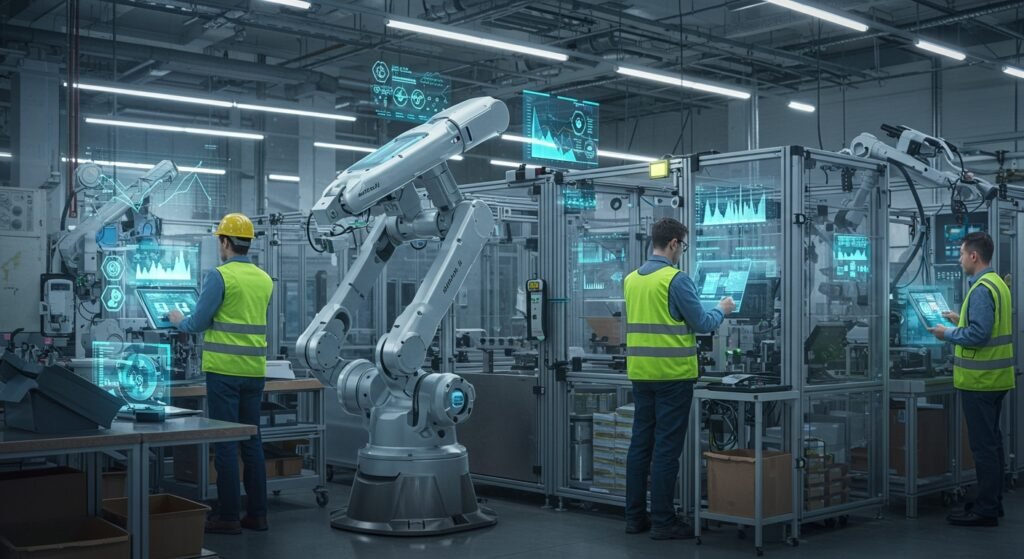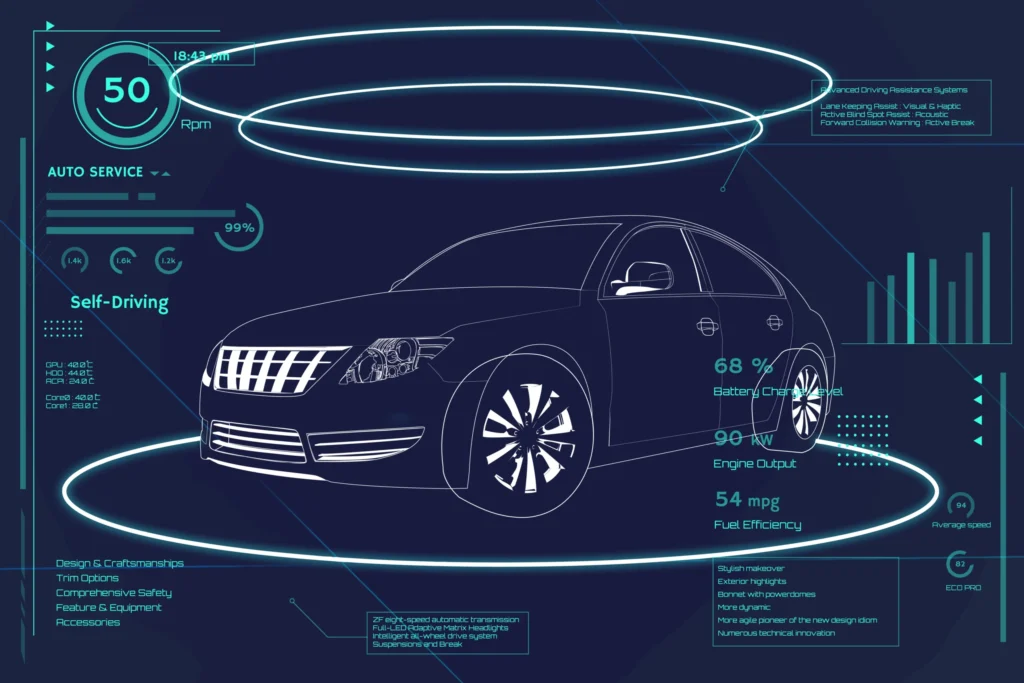Introduction: Unveiling The Rise of Industry 5.0
The industrial landscape is perpetually evolving, constantly pushing the boundaries of what’s possible in manufacturing and production. From steam engines to assembly lines, and then to the digital revolution, each industrial era has brought transformative changes. Now, we stand at the precipice of another significant shift: The Rise of Industry 5.0. While Industry 4.0 focused on automation and interconnected systems, Industry 5.0 takes a profound leap forward, re-centering the human element within the smart factory, emphasizing collaboration, sustainability, and resilience. This evolution promises not just efficiency, but a more ethical and sustainable future for global industries.
- Beyond Automation: The Core Principles of Industry 5.0
- Key Technologies Driving The Rise of Industry 5.0
- Impact and Benefits of Industry 5.0
- Challenges and the Path Forward
- Navigating the Future: Embracing The Rise of Industry 5.0
Beyond Automation: The Core Principles of Industry 5.0
Industry 5.0 is more than just technological advancement; it’s a paradigm shift in how we view the relationship between technology, people, and the planet. Its foundational principles are designed to address the shortcomings and elevate the potential of purely tech-driven industrial models.
Human-Centric Approach
At its heart, Industry 5.0 places human well-being and contribution back into the spotlight. Instead of replacing human labor, it focuses on enhancing it through human-robot collaboration (HRC). Cobots (collaborative robots) work alongside humans, taking on repetitive or dangerous tasks while allowing human workers to focus on creative problem-solving, decision-making, and tasks requiring fine motor skills or emotional intelligence. This fosters a more engaging, safer, and ultimately more productive work environment.
Sustainability at its Core
Environmental responsibility is no longer an afterthought but an integral component of industrial design and operation in Industry 5.0. This includes optimizing resource usage, minimizing waste, reducing carbon footprints, and promoting circular economy principles. Smart factories leverage data and AI to make production processes more energy-efficient and reduce their environmental impact. Learn more about sustainable manufacturing practices in our related article.
Resilience and Adaptability
The recent global disruptions have highlighted the critical need for supply chain resilience. Industry 5.0 builds on this by advocating for systems that can withstand unexpected shocks, adapt quickly to changing market demands, and maintain operations in the face of disruptions. This is achieved through decentralized production, robust digital twins, and highly flexible manufacturing processes.
Key Technologies Driving The Rise of Industry 5.0
While the principles are human-centric, the practical implementation of Industry 5.0 relies heavily on advanced technologies, many of which evolved during the Industry 4.0 era, but are now applied with a new emphasis.
AI and Machine Learning
Artificial Intelligence and Machine Learning are crucial for optimizing complex processes, predictive maintenance, quality control, and even personalizing product development. In Industry 5.0, AI tools assist human decision-makers, providing insights and automating routine analysis, freeing up human cognitive resources for more complex challenges.
Advanced Robotics and Cobots
Collaborative robots are the poster child of human-robot synergy in Industry 5.0. Unlike traditional industrial robots, cobots are designed to work safely alongside humans, often without cages, sharing workspaces and tasks. They are easily programmable and adaptable, making them invaluable for flexible manufacturing lines.
Internet of Things (IoT) and Digital Twins
The extensive network of interconnected sensors and devices (IoT) provides real-time data from every corner of the factory. This data fuels the creation of ‘digital twins’ – virtual replicas of physical assets, processes, or even entire production lines. Digital twins allow for simulations, predictive analysis, and optimization in a virtual environment before implementing changes in the real world, enhancing efficiency and reducing risks.
Impact and Benefits of Industry 5.0
The shift to Industry 5.0 offers a multitude of benefits, not just for businesses, but for employees and the planet as well.
| Feature | Industry 4.0 Focus | Industry 5.0 Focus |
|---|---|---|
| Primary Goal | Automation, Efficiency, Data-driven | Human-centric, Sustainability, Resilience |
| Human Role | Operator, Supervisor of machines | Collaborator, Creator, Innovator |
| Key Technologies | IoT, AI, Big Data, Cloud | Cobots, Advanced AI, Digital Twins, Green Tech |
| Environmental Impact | Efficiency gains (secondary) | Core design principle (primary) |
| Flexibility | High (mass customization) | Higher (adaptive, resilient production) |
Beyond these comparative insights, Industry 5.0 leads to enhanced productivity through optimized human-machine collaboration, greater product customization tailored to individual needs, and significant improvements in worker well-being through safer and more fulfilling job roles. Furthermore, the emphasis on sustainability contributes directly to a healthier planet by reducing waste and resource consumption.
Challenges and the Path Forward
While the vision for Industry 5.0 is compelling, its full realization comes with inherent challenges. Organizations must navigate significant skill gaps, as new roles require a blend of technical expertise and soft skills like critical thinking and creativity. Ethical considerations surrounding AI, data privacy, and the future of work also need careful deliberation. Finally, substantial investment in new technologies and infrastructure is necessary for businesses to make this transition. For more detailed insights, you can explore resources from the European Commission on Industry 5.0.
Navigating the Future: Embracing The Rise of Industry 5.0
Embracing Industry 5.0 is not merely about adopting new technologies; it’s about fostering a new mindset that prioritizes people and planet alongside profit. Companies that successfully integrate these principles will not only gain a competitive edge but will also contribute to a more sustainable, resilient, and human-centric industrial future. The journey requires strategic planning, continuous learning, and a commitment to innovation that extends beyond the factory floor into every aspect of business operation.


